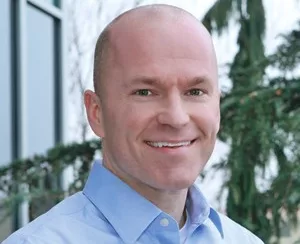
Home » Rethinking asset protection can involve common sense solutions
Rethinking asset protection can involve common sense solutions

September 12, 2022
Some readers have heard of personal asset protection strategies like trusts or limited liability companies.
The draw to products like these is the supposed promise that your personal assets can be protected. Not only is the issue of asset protection much more nuanced than establishing either of those options, but there are also a host of asset protection strategies that should be employed (or at least considered) as part of a holistic approach to asset protection well before the consideration of complex trusts and LLCs.
Business owners should always have an entity for doing business (LLC or corporation), but business liability is not the focus of this column.
What is your liability?
The starting point is to take stock of potential liability and the corresponding asset exposure.
What activities or arrangements do you engage in that might cause the most liability for you?
After evaluating those activities or engagements, how might you work to reduce the risk?
The following are some examples of risks to mitigate in our everyday lives (not to the exclusion of other potential risks): analyze your property for attractive nuisance issues (See previous column, “How to Protect Against Attractive Nuisance to Avoid Liability”); ensure your home has the appropriate safety systems to prevent injury (e.g., handrails for steps); if you own a dog, ensure the dog is well-trained (See previous column, “Your Best Friend Can Be a Strict Liability”); when driving, practice defensive driving and slow down; and, if you have had anything to drink, call an Uber.
Although not very sexy sounding, all of these efforts can become part of your risk mitigation strategy prior to looking to trusts and LLCs.
Appropriate insurance
Insurance should be strategically employed. Check your property and casualty insurance levels. Make sure to also acquire an umbrella insurance policy.
An umbrella policy is an insurance product alongside your typical home and auto policies and gives you another layer of liability coverage.
Generally, these are sold in increments of $1 million and have relatively low annual premiums (think a few hundred dollars per million of coverage).
A reasonable gauge
As humans, our view of risk is often skewed from anecdotal evidence and dismissive of statistical realities.
Using a specific profession as an example of risk, let’s examine doctors – a potentially high liability profession.
Doctors are often concerned with malpractice liability and seek sophisticated asset protection strategies to guard their wealth. But are these concerns justified?
One study on physician liability risk in the New England Journal of Medicine determined that, across all specialty fields, the average physician had about a 1.6% chance of a claim leading to payment in any given year. (“Malpractice Risk According to Physician Specialty,” New England Journal of Medicine, August 18, 2011).
Notably, 78% of all claims did not result in payments to claimants and the mean indemnity payment was $274,887 (median was $111,749).
But that’s not the end of the story.
Now, layer in typical insurance coverage.
Doctors are usually covered by malpractice insurance that is issued in the millions of dollars.
Accordingly, a more important consideration is the number of cases that led to liability for the doctor combined with an out-of-pocket payment (i.e., a claim that is not fully satisfied by insurance) by the doctor.
Another study found that, of all the claims paid during the study period, only 1.2% of the awarded claims resulted in an out-of-pocket payment by the physician. (Charles Silver, David A. Hyman, Bernard S. Black & Myungho Paik, “Policy Limits, Payouts, and Blood Money: Medical Malpractice Settlements in the Shadow of Insurance,” 5 U.C. Irvine L. Rev. 559, 2015).
The paper concludes with this poignant line: “Although physicians loudly complain that they are one med mal claim away from bankruptcy, the empirical evidence paints a radically different picture. The risk of an (out of pocket payment) is small – vanishingly so when a physician buys $1 million in malpractice coverage.”
Compare that risk to, say, dying in a car accident (about 1% according to the National Safety Council Injury Facts) and it might encourage the exploration of different solutions to risk management.
Tips to reduce liability
Whether property and casualty, malpractice, or errors and omissions, insurance carriers often offer tips to reduce your liability exposure.
When I was a private practice attorney, the errors and omissions insurance carrier would offer the attorneys at my office tips on reducing liability.
The advice ranged from documenting the relationship and communications to setting fee expectations.
Their goal was selfish but helpful – they want to reduce the incidence and magnitude of claims and they have statistics to measure and reduce risk.
So, lean on those options and explore the offerings available.
It gets complicated
The reality is that the strategies above are likely more effective at protecting your assets than complex trusts and LLCs for most individuals, and they are also more administratively palatable.
You don’t need to look at hiring attorneys or review a state-by-state comparison of asset protection laws.
There are relatively simple and common-sense solutions to many liability risks.
Employing more sophisticated trusts and LLCs might make sense for some, but it should be reserved for implementation after the basics outlined here have been addressed.
Beau Ruff, a licensed attorney, is the director of planning at Cornerstone Wealth Strategies, a full-service independent investment management and financial planning firm in Kennewick.
Local News Opinion
KEYWORDS september 2022





